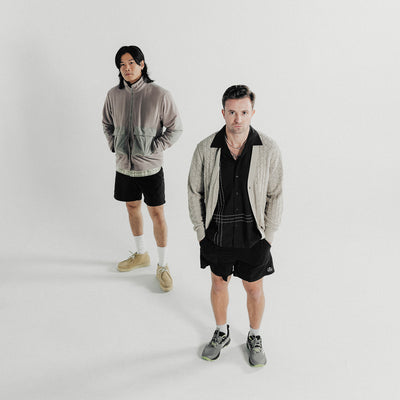Ephemera: Ghost Shadows.


Jon Moy is a freelance writer based in Detroit. He’s written about a lot of things, but mostly about fashion. He’s just happy to be here. You can follow him on Twitter and Instagram at @moybien1212.
Lately, I’ve been reading a ton about 80's Tongs in NYC. I’ve been obsessed with Chinese-American gangs my whole life but the past few weeks it’s been all about Tongs in the ‘80s with uzis, black jeans, and white Keds. Tongs, originally associations created to help overseas Chinese immigrants adapt and survive in the United States, evolved into a novel organized criminal element situated primarily in San Francisco and New York City Chinatowns. Controlling everything from loan sharking and protection rackets to gambling halls and drug trafficking, the Tongs operated almost exclusively within Chinatown. These Tongs have existed ever since their creation at the end of the 1800s. In New York City, from the ‘70s through the ‘90s, one of the more dominant Tong related gangs were The Ghost Shadows.
Affiliated with the On Leong Tong, a major and historic group, the Ghost Shadows emerged in the late 1970s as almost an amalgamation of the traditional Tongs, like the On Leong and the Hip Sing and the emergent street gang culture of the ‘70s and ‘80s. Distinguished by their spiky hair with dyed tips, white Keds, tapered black jeans, and beepers, the Ghost Shadows were a violent expression of dissatisfaction with the American Dream. The Tong Wars of the 19th Century featured hatchets, knives, and the occasional pistol; the Ghost Shadows had automatic weapons and foreign cars. Covered contemporaneously by the New York Times and the Village Voice, the Ghost Shadows were the central figures in a renaissance of depicting Chinatowns as dens of inequity and inscrutableness.
Painted then in the same light that gangs like MS-13 are today, Tongs were often described as foreign importations of crime and vice, despite being truly homegrown phenomena. In fact, gangs like the Ghost Shadows probably could only be created in the cauldron of American socioeconomics. The Ghost Shadows' height of power ran throughout the ‘80s, until Federal RICO charges dismantled the group in the mid-’90s.
It’s interesting that despite having two very distinct, very bloody eras of gang violence, the Chinese-American community has been reassigned from Foreign Invader that steals jobs and brings violence and drugs to the United States to a peaceful Foreign Invader that, at the very worst, steals professorships and engineering positions from hard-working (white) Americans. The model minority myth, one so clearly wheatpasted onto Chinese Americans by the dominant majority, is used to divide communities of color and further deny opportunity and support to Black communities as a sort of straw man argument to maintain the illusion that US policy is not leveraged against Black communities.
Chinese people can spend the ‘80s running around Mott and Canal streets with automatic weapons, beepers, heroin, and Keds - of all sneakers - to less than a generation later being stereotyped as passive and peaceful bookish types that love software engineering. Manipulating perception is a tool of the oppressor and while I’ll never condone shooting up Pell street, I also reject the model minority myth that is so clearly not supported by history.
And while we’re talking about gangs, remember that Police Departments and the Prison Industrial Complex are the biggest sources of organized crime in the United States. (This would be a good time to plug 13th on Netflix if you are interested in learning more and haven't watched it yet). Defund the police and work towards prison abolition. Consider donating to Critical Resistance, an organization committed to the dismantling of the Prison Industrial Complex.









































